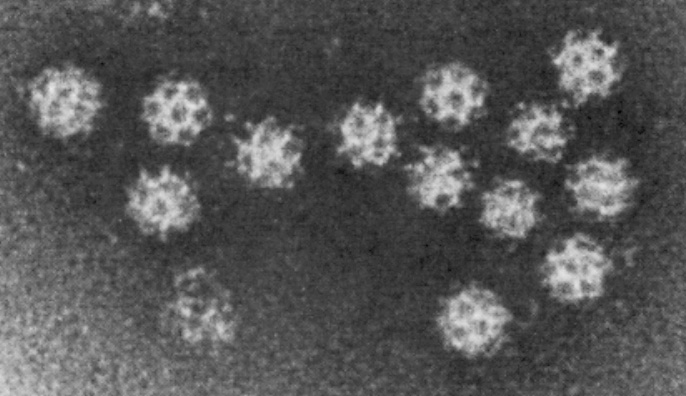
This web page was produced as an assignment for an undergraduate course at Davidson College.
Pathogen Life Cycle
Yellow fever is a vector-borne flavivirus capable of infecting many mammals, most notably monkeys and humans. The virus itself is dormant in the vector, the mosquito Aedes aegypti. The dormant virus is coated in a lipoprotein envelope, presenting several markers easily recognized by the innate immune system.

http://eee.uci.edu/clients/bjbecker/PlaguesandPeople/lecture13.html
The Yellow Fever Virus
Upon entering the host, the virus waits to be phagocytosed by a macrophage. Immediately following phagocytosis, the virus sheds its envelope and disables further digestion by the macrophage. The macrophage continues with the healthy virus to the lymph nodes where the virus begins replication in earnest. The virus lyses its host macrophage and seeks to infect other macrophages. From the lymph node the virus is eventually carried through the blood stream to the liver. Once in the liver, the virus is able to infect Kupffer cells lining bloodvessels in the liver. The Kupffer cells are macrophages residing in the liver responsible for clearing cellular debris and dead and damaged blood cells from the bloodstream. The infection and death of Kupffer cells damages surrounding hepatocytes, leading to the formation of translucent hyaline "councilman bodies," the hallmark of yellow fever. Liver damage prevents the bile precursor bilirubin from being converted to biliverdin, leading to the most visible symptom of yellow fever; jaundice. Once the virus has heavily replicated and liver damage is extensive symptoms ranging from flu-like symptoms, joint-pain, encephalitis, and hemorrhagic disease develop. Yellow fever is lethal in 10-30% of cases. Once systemic, the virus is collected from the bloodstream by mosquitos, where it begins its life cycle again.
Barnes E. Diseases and Human Evolution. Albuquerque : University of New Mexico Press, 2005.
Tesh RB, Guzman H, Travassos de Rosa APA, Bunnell JE, Zhang H, Xiao SY. 2001. Experimental Yellow Fever Virus in the Golden Hamster (Mesocricetus auratus). I. Virologic, Biochemical, and Immunologic Studies. The Journal of Infectious Diseases 183: 1435.
Return to My Home Page